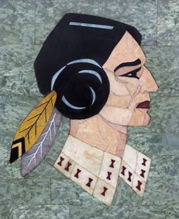TUSCARORA LAPIDARY SOCIETY, INC.
We teach the journey from rocks to gems to jewelry.
Examples of lapidary, jewelry and glass arts taught at the TLS Education Center.
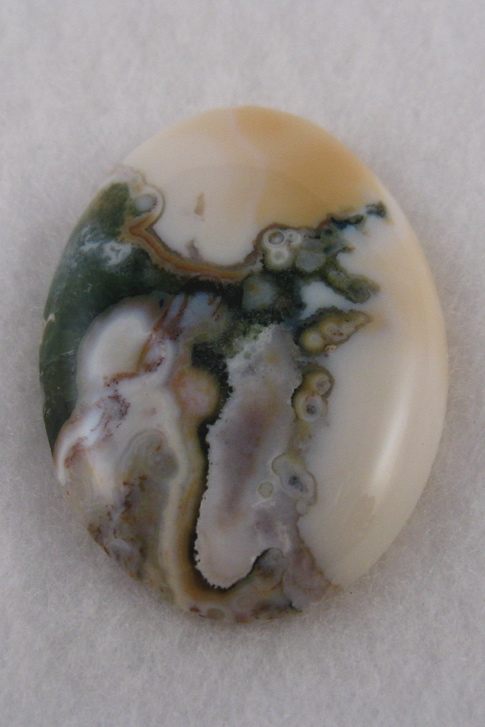
Cabochon
Cabochons are rounded gemstones, normally with a flat back. Cabochons are typically set in bezels, although they can also be set with prongs, or wire-wrapped, or hung by a bail. This cabochon is ocean jasper.

Pendant
Textured sterling silver pieces with reticulated 80-20 silver and a touch of gold soldered onto a sterling back plate. The cabochon is Noreen Jasper from Australia.
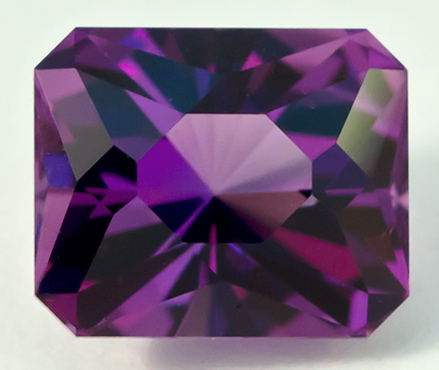
Faceted Stone
Faceted gems have many flat surfaces, called facets. They are normally transparent. Light travels into the gem, is reflected from the various facets, and some ends up reflected back to the viewer giving a sparkling effect. This gem is amethyst.
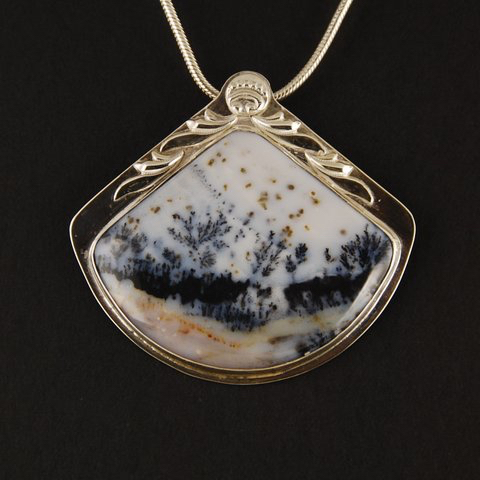
Pendant
This pendant was created with sterling stamped shapes soldered onto a sterling back plate. The cabochon is dendritic agate.
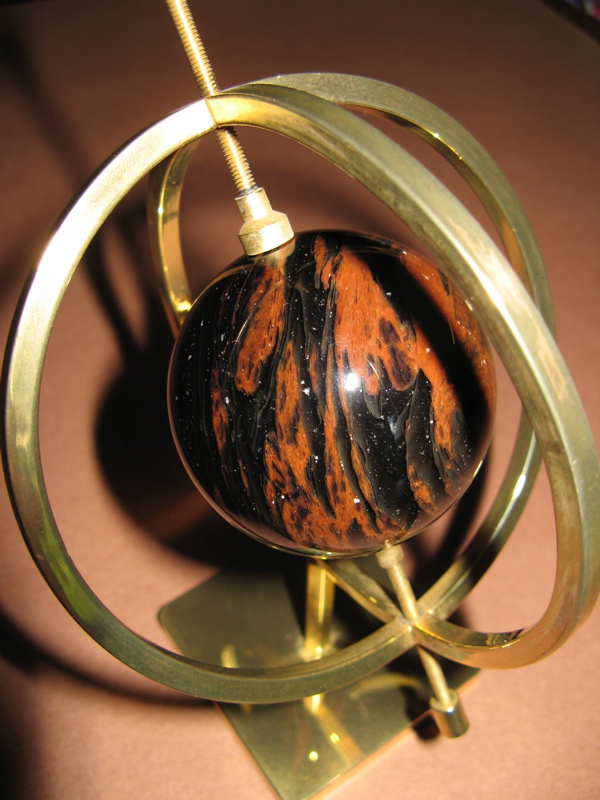
Sphere
Natural or synthetic stone can be shaped into a sphere with simple lapidary equipment. This 2″ diameter sphere is of mahogany obsidian.
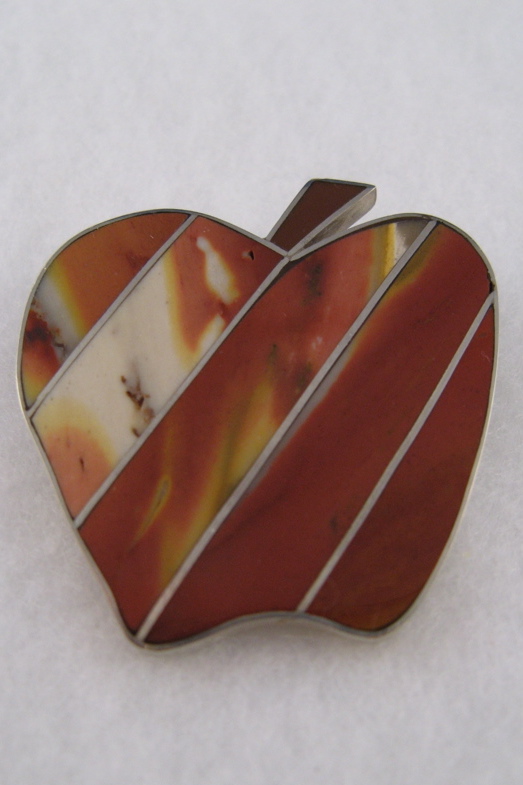
Channel Jewelry
The art of channel jewelry includes the skills of soldering strips of silver together to outline a picture or figure, as in a line drawing, then soldering it to a silver back. The spaces (or channels) between these silver strips are then filled with accurately cut stones. In this apple, the inlays are from mookaite jasper.
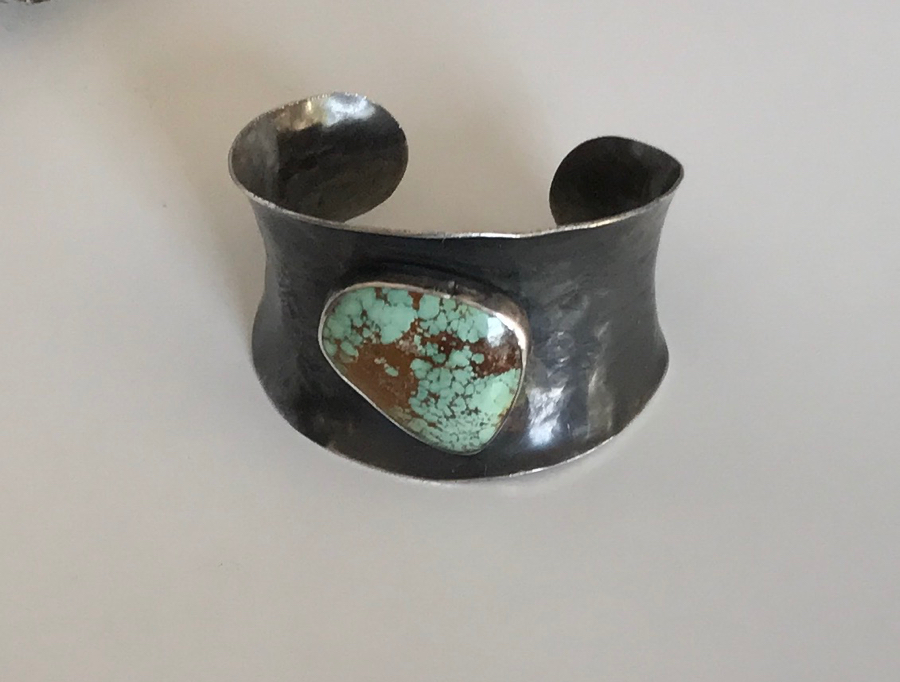
Cuff Bracelet
This sterling silver cuff bracelet, set with an American turquoise, uses forging and forming to achieve an anticlastic shape, as well as sawing and soldering to create the setting for the stone.
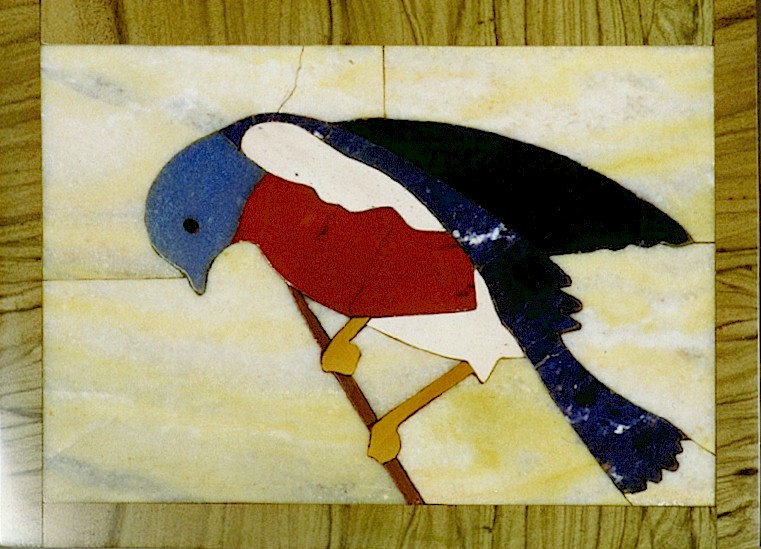
Intarsia
Intarsia is the making of a picture or geometric design using slices of stone that are cut to align with each other with no gaps. This is in contrast to mosaics in which the pieces of stone are separated by grout lines. This intarsia is a small picture about 6″ wide.
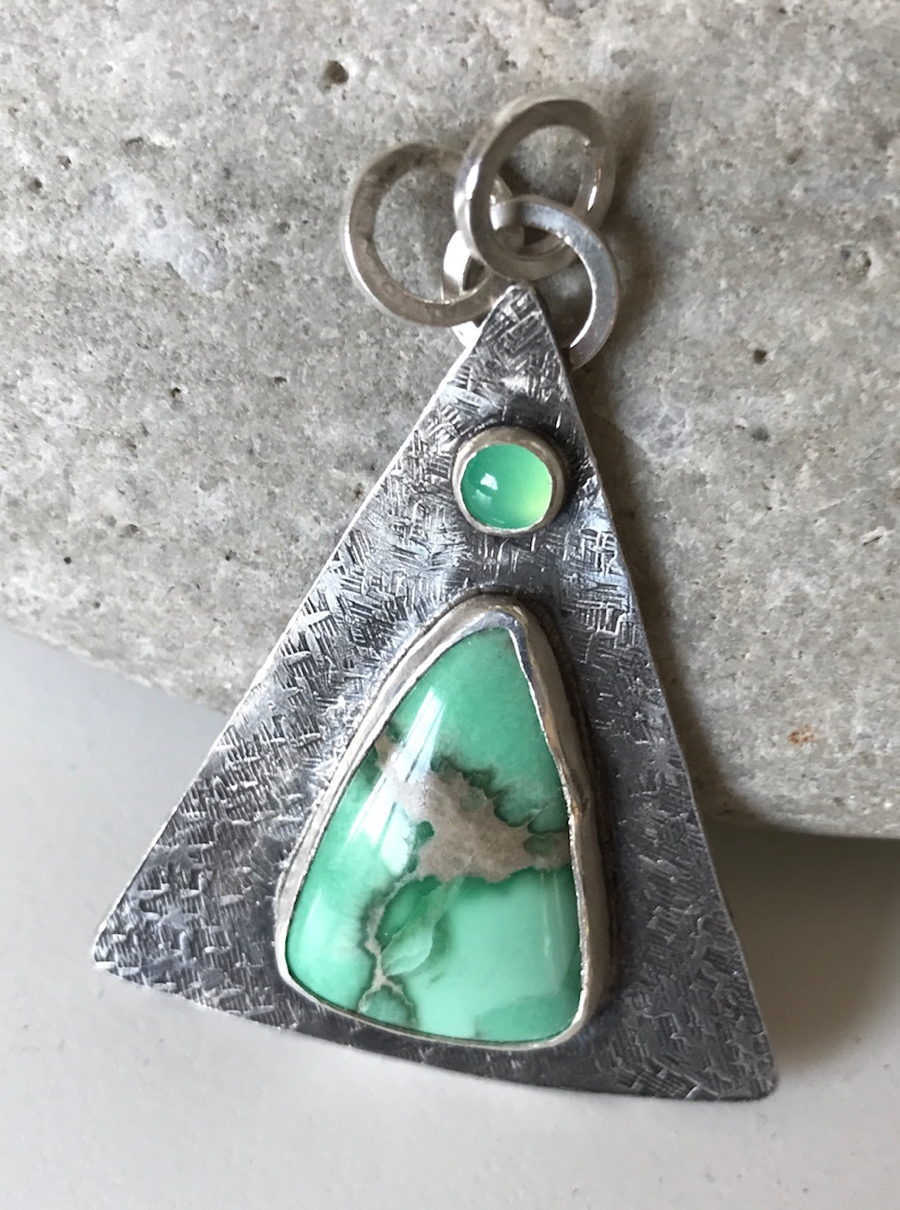
Pendant
This sterling silver pendant uses a variety of metalsmithing techniques including sawing, hammering, rolling mill texture and soldering to set variscite and chrysoprase.
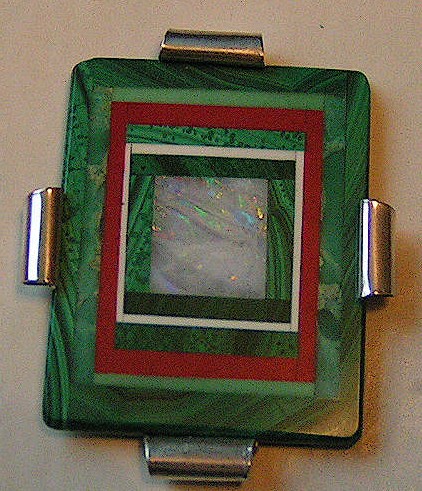
Jewelry Intarsia
Intarsia is the making of a picture or geometric design using slices of stone that are cut to align with each other with no gaps. This is in contrast to mosaics in which the pieces of stone are separated by grout lines. This jewelry size intarsia is set into a pendant.
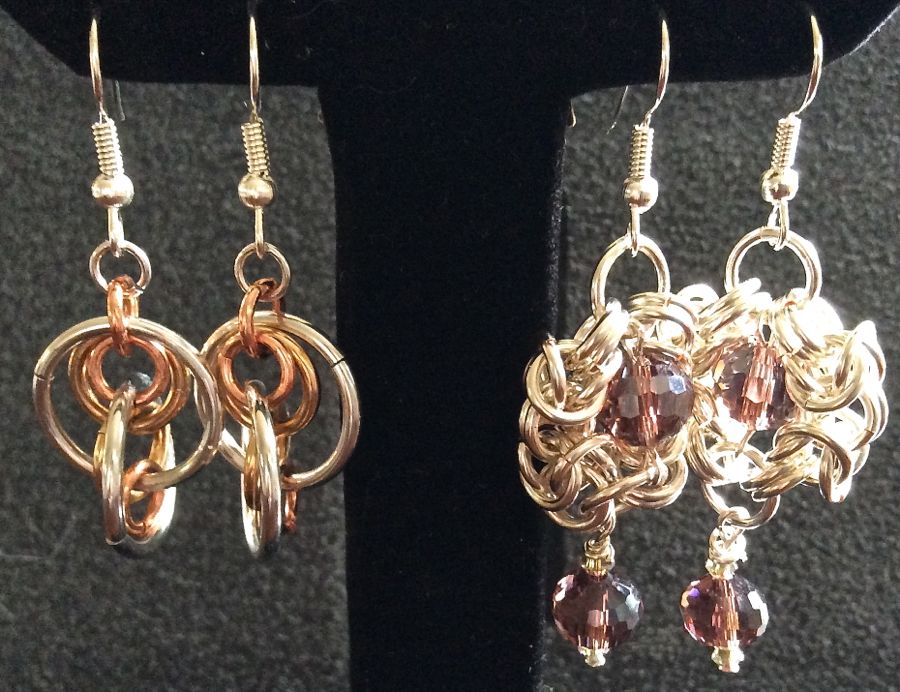
Chain Maille Earrings
Chain Maille jewelry in made by linking metal rings of various sizes and colors. With a supply of rings and some basic pliers, one can make bracelets, necklaces, pendants, key chains and more.
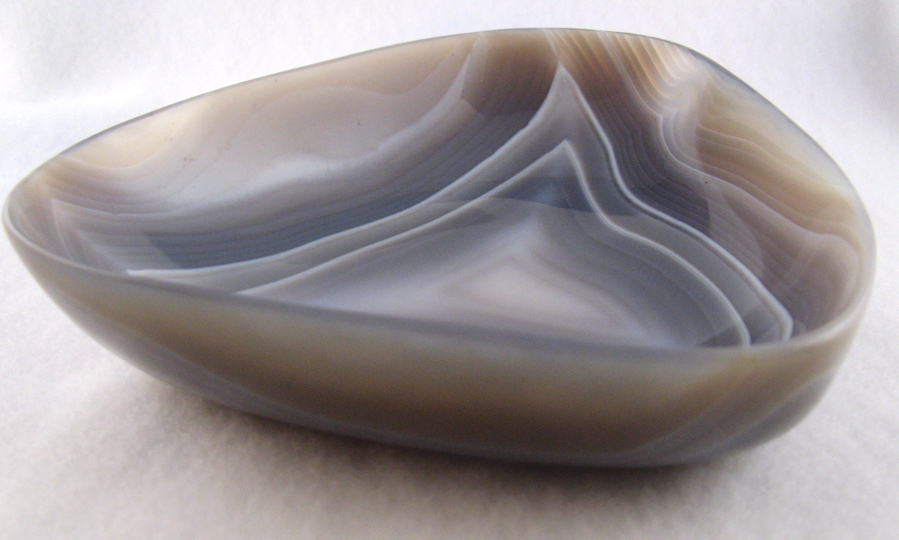
Agate Bowl
This 5″ freeform bowl was shaped by hand from a large piece of agate. Making the outside is like making a very large cabochon. Grinding and polishing the inside requires special tools and a lot of patience.
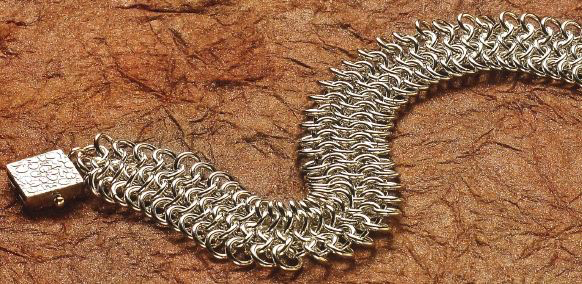
Chain Maille Bracelet
This is an example of a European Sheet Weave chain maille bracelet, made by linking metal loops in a special pattern.
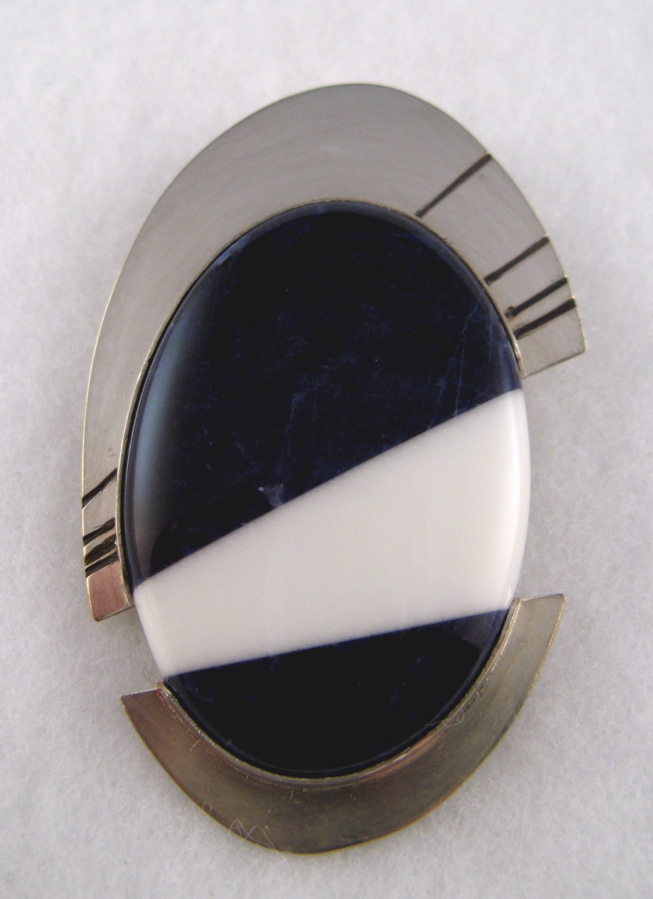
Composite Cabochon
This composite cabochon was made from slabs of howlite and sodalite. The cab form suggested the shape of the sterling pendant in which it is set.
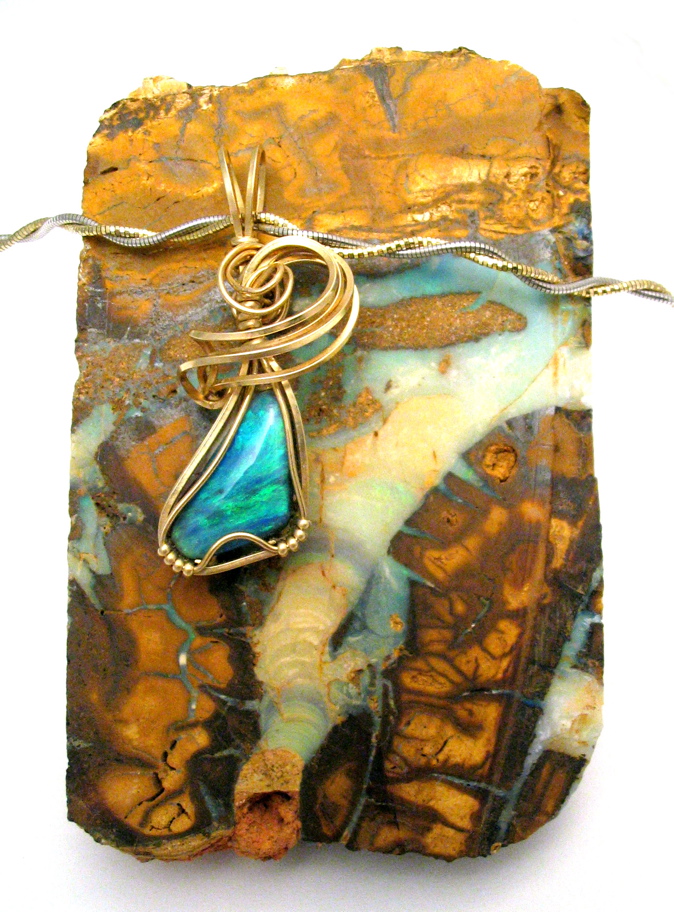
Wire Wrapped Opal
A large piece of Boulder Opal provides the background for this beautiful opal in a wire-wrap setting.
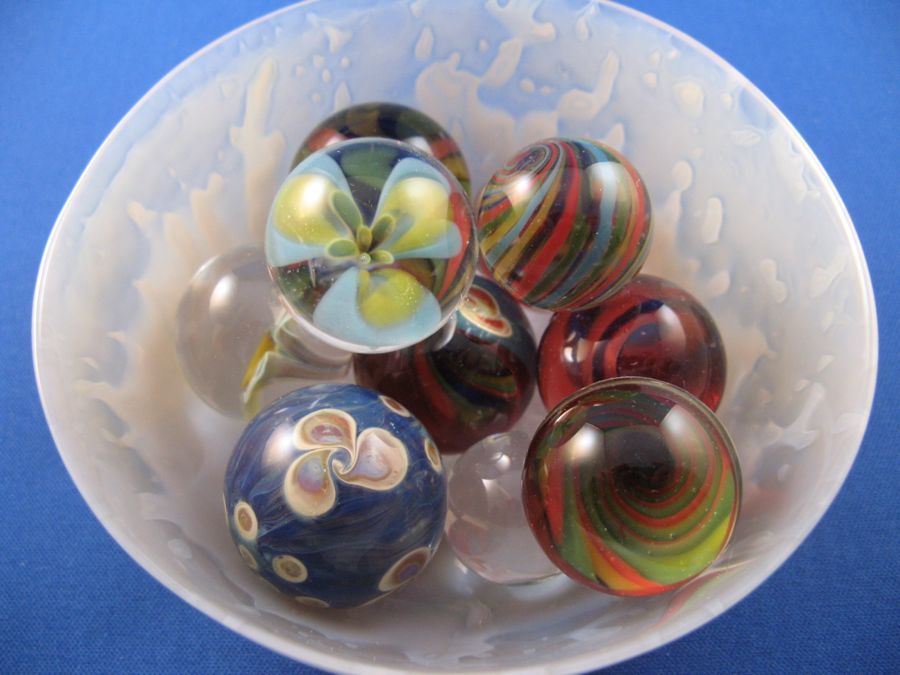
Glass Marbles
These marbles were made out of borosilicate glass rods at a torch, and are displayed in an agate bowl.

Freeform Opal
This beautiful opal was shaped as a freeform to preserve as much of the blue color as possible.
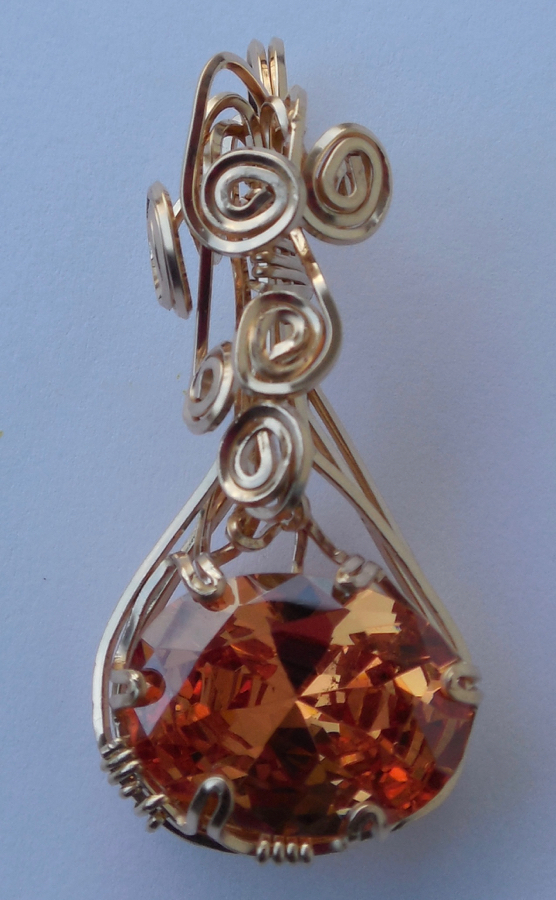
Wire Wrap Setting
This is an example of a wire-wrap setting for a faceted gem.
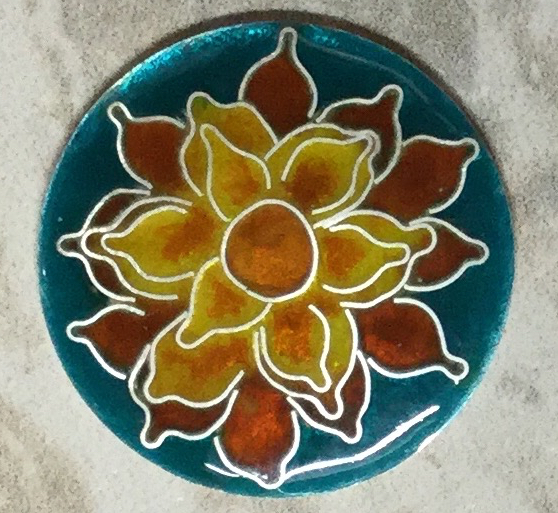
Cloisonné
Cloisonné is an ancient decorative technique. In this example, fine silver wire was soldered onto a fine silver disc to form the pattern. Powdered glass was placed into the resulting compartments, and then the piece was heated in a kiln causing the glass to fuse into a smooth vitreous enamel.
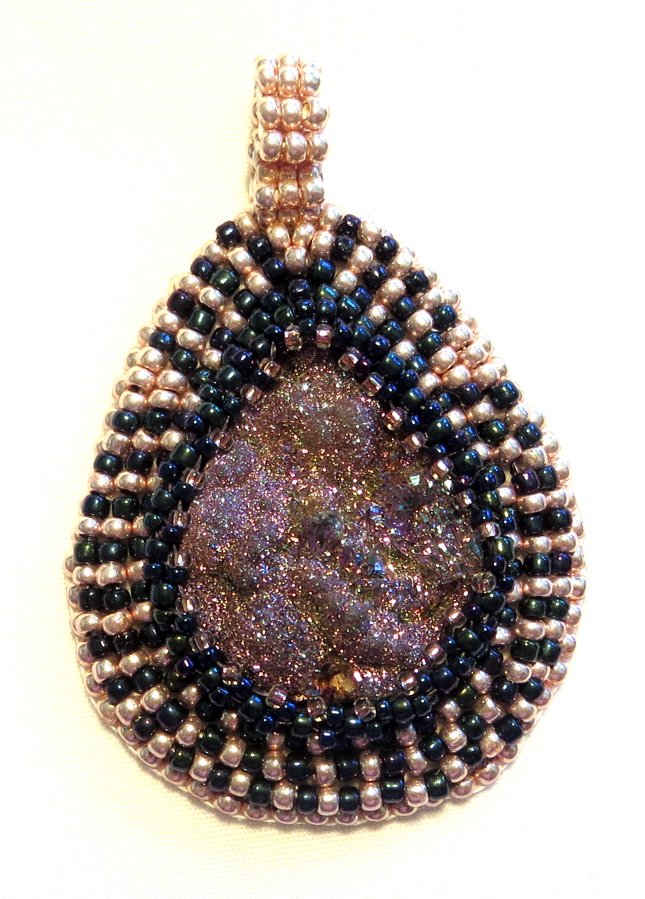
Seed Bead Bezel
This bezel is created from seed-beads and holds a piece of druzy quartz in which tiny crystals cover the surface and give a sparkling effect.
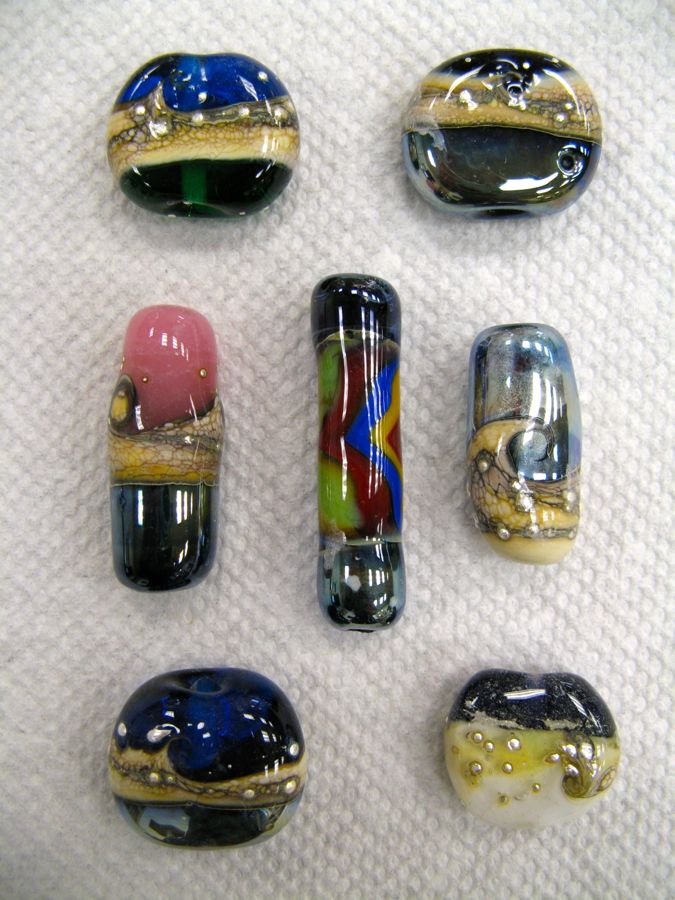
Glass Beads
These glass beads were made at a torch from rods of glass. An infinite variety of shapes and color patterns can be produced.
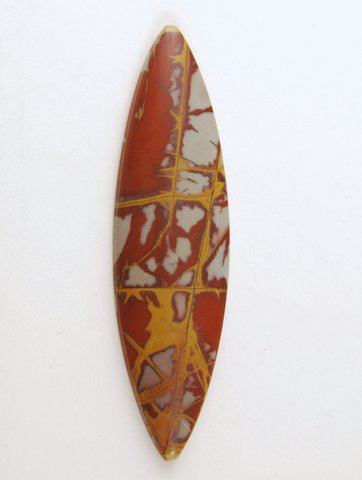
Noreena Jasper Cabochon
Cabochons come in many shapes. Among the most common are ovals, circles, squares, rectangles and tear drops. But there are many fancy shapes as well. This pointed oval is particularly effective in displaying the patterns of Noorena Jasper, found only in the Pilbara region of Western Australia.
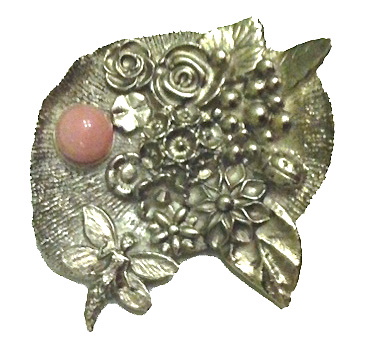
Art Clay Silver
This pendant was made from Art Clay Silver. Art Clay is a soft clay, mixed with fine silver. When fired in a kiln it yields a piece of fine silver jewelry. Precious Metal Clay is a similar product used in the same way.
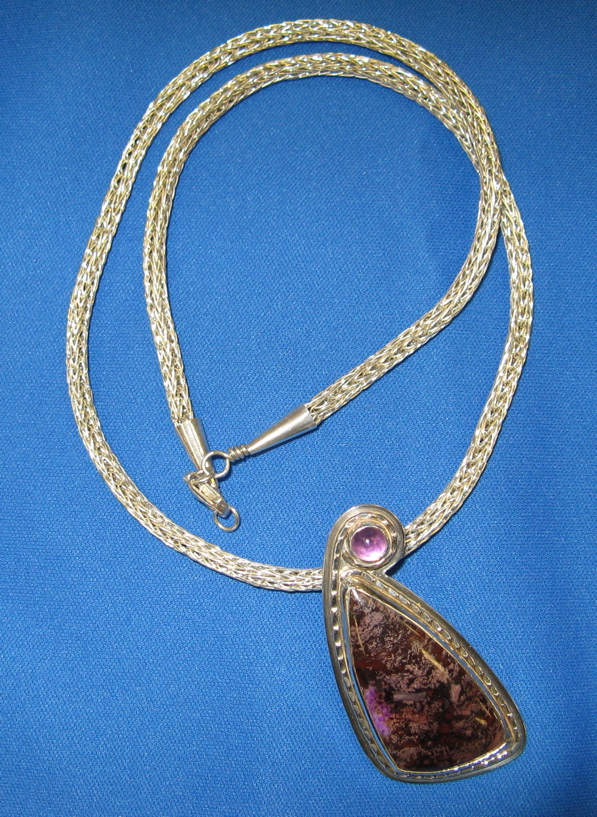
Viking Knit
The necklace holding this pendant was made with the Viking Knit technique. Silver wire was threaded in a special pattern around a dowel, and then pulled through draw plates to tighten and narrow. The technique can be used to make beautiful and flexible necklaces and bracelets.
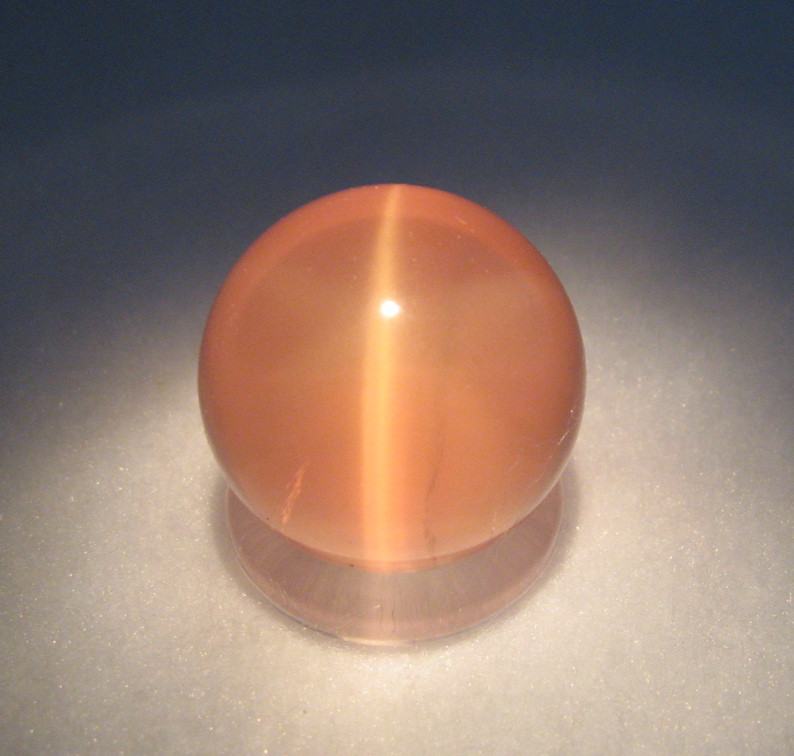
Rose Quartz Star
Rose quartz is often filled with very fine hairs of rutile. In this rose quartz sphere, the rutile makes a 6-ray star when illuminated by a point of light. In this case one “eye” (two of the rays) is very bright and the others are dimly visible.
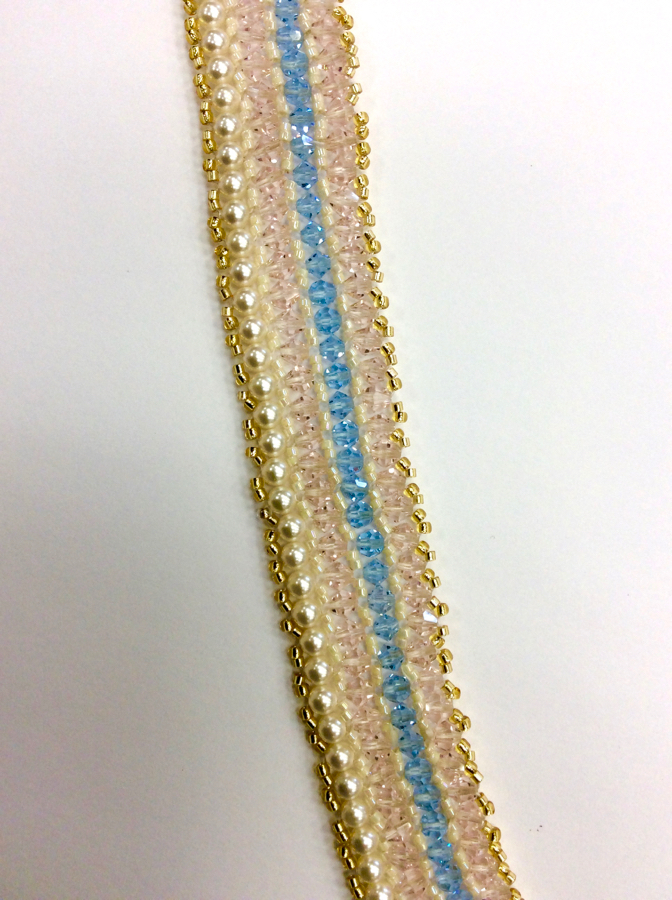
Ribbon Candy Bracelet
In this example beads are woven together in such a fashion as to make a wide and flat form suggestive of ribbon candy.
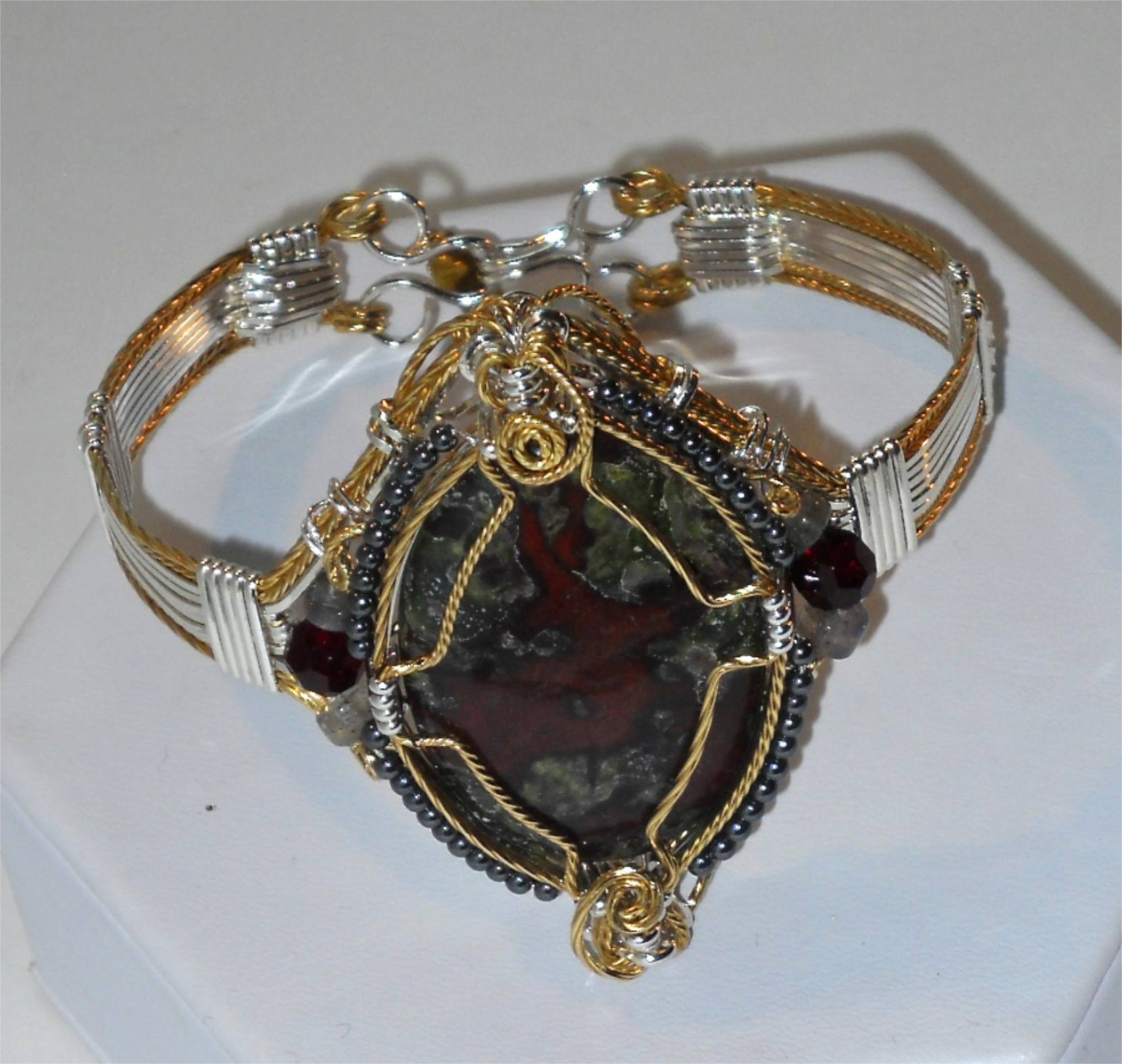
Wire-work Bracelet
Beads and a cabochon are incorporated into fancy wirework to make this bracelet.
